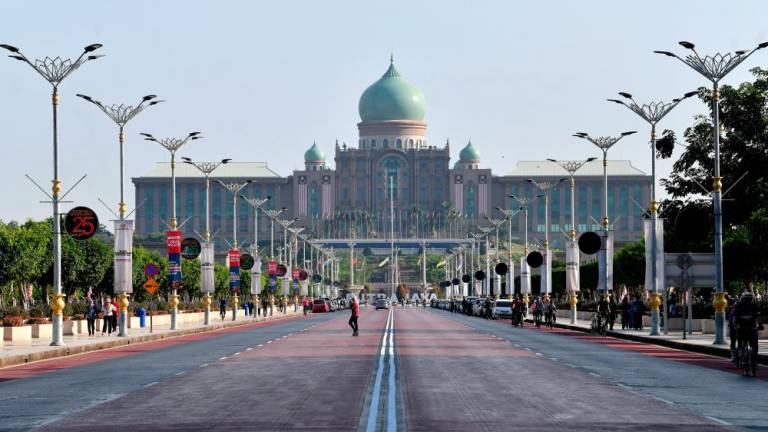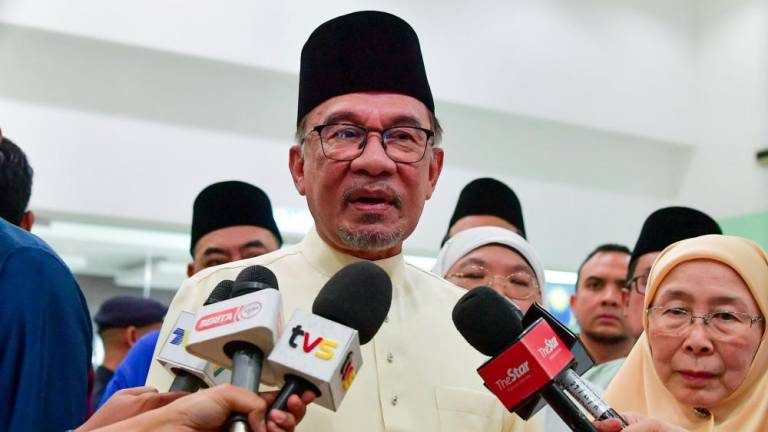AS we enter the fifth phase of the movement control crder (MCO), otherwise also known as conditional MCO (CMCO) that has been extended till June 9, an “exit” strategy for the country looms large.
An exit strategy is necessary because otherwise we would be muddling our way through. It would be bad for business and the rakyat’s confidence which in turn will feed into a self-serving prophecy with damaging consequences for the economy.
The objectives of the exit strategy should be two-fold:
» To ensure that we have mitigated and managed well the impact of the Covid-19 crisis in public health safety and security; and
» To ensure that we are on the path and right track towards economic recovery.
So, what form of exit strategy could we take?
Currently, we are still in the planning and preparation stage for the exit strategy – which should encompass both the economic and public health dimensions.
In other words, the need for an exit strategy must be balanced with the need for caution and vigilance on the public health part. This is especially so since there is always the risk of new wave of infections (still in the double digits).
Both of these dimensions (economic and public health) have, of course, been subject to a delicate balance under the MCO period and even now as we are gradually relaxing measures for businesses to resume operations (CMCO).
A policy article by Eoin Daly of McKinsey Malaysia entitled “How emerging economies should navigate economic recovery post-pandemic” described five phases whereby countries are adopting to manage the Covid-19 crisis, among which are resilience, return and reimagination.
Taking the cue from “reimagination”, I would like to offer some thoughts, with a particular focus on the SMEs. This is in line with the calls for SMEs to leverage on the difficult time to digitalise or “go online”.
Coming to post-MCO/Covid-19, this is the best way forward for the SMEs to restart on a more sustainable footing – so as to thrive in the long term.
Therefore, I would like to propose that the government undertake another stimulus package aka “Prihatin 3.0” – which could be incorporated into its economic recovery plan (ERP) at least in the medium to long-term (ie within a five-year duration).
This time around, the target would be infrastructure comprising both digital as well as physical that is geared towards digitalisation. For digital infrastructure, it would comprise the infrastructure that enables and empowers connectivity to take place at very high speed such as fibre optic network and 4G technology and cloud computing or virtual servers.
Complementing the effort, physical infrastructure geared towards digitalisation would be offices and plants hosting the digital infrastructure such as the cables containing the fibre optic network and database centres hosting cloud computing.
And the stimulus package should be limited to two rounds at most. This is to ensure that the stimulus package is timely, targeted and temporary. Temporary means that higher deficits would not detract from the path of fiscal consolidation.
For instance, the first round of public investment would be limited to laying out the physical infrastructure with the digital infrastructure coming in at the later stage.
Placing the physical infrastructure first – as the foundations – would also enable the private sector to “wait and see” for further developments. Once the foundations are successfully completed, thus signalling the readiness of the digital infrastructure to be installed, private sector investment could also be induced and this will enhance public-private partnerships (up- and mid-stream) with further multiplier effect.
The physical infrastructure could take the form of digital free trade zones or e-commerce hubs as sites for new platforms servicing mainly the SMEs.
Additionally, there should be an establishment of a digital and futurist hub located in every region – to promote the creation of a new breed of tech-savvy SMEs.
The hub would contain green infrastructure hosting laboratories, incubators and pods for innovations, experiments, creations of new and future technologies drawing from and revolving around the various clusters of AI, nanotechnology, additive manufacturing, biomedical engineering, computer-aided surgery, Geographic Information Systems, Global Positioning System, Internet of Things, and Big Data.
This would complement the existing sites such as the HLX (Kuala Lumpur) as a one-stop centre and “convergence point” for SMEs in the form of technopreneurs with their sponsors, ie the venture capitalists.
The initiative could be a public-private partnership between SMEs with the Malaysian Digital Economy Corporation. The digital infrastructure should complement and supplement the National Fiberisation and Connectivity Plan.
Finally, with many of our SMEs experiencing cash flow problems and difficulties in accessing bank credit, government’s priorities in paving the way for an exit strategy should be as follows:
Reduce red-tape and turnaround time, fast-track and simplify the procedures for credit application processing. The Entrepreneur and Cooperative Development Ministry is implementing such measures through Bank Rakyat, SME Bank Bhd and Tekun Nasional.
Cut taxes for SMEs – across the board.
Investment in digital infrastructure could serve as a catalyst and impetus for the SMEs to make use of pre-existing allocations to digitalise – under Budgets 2019 and 2020 as well as the economic stimulus package.
Jason Loh Seong Wei is head of Social, Law and Human Rights at EMIR Research.














